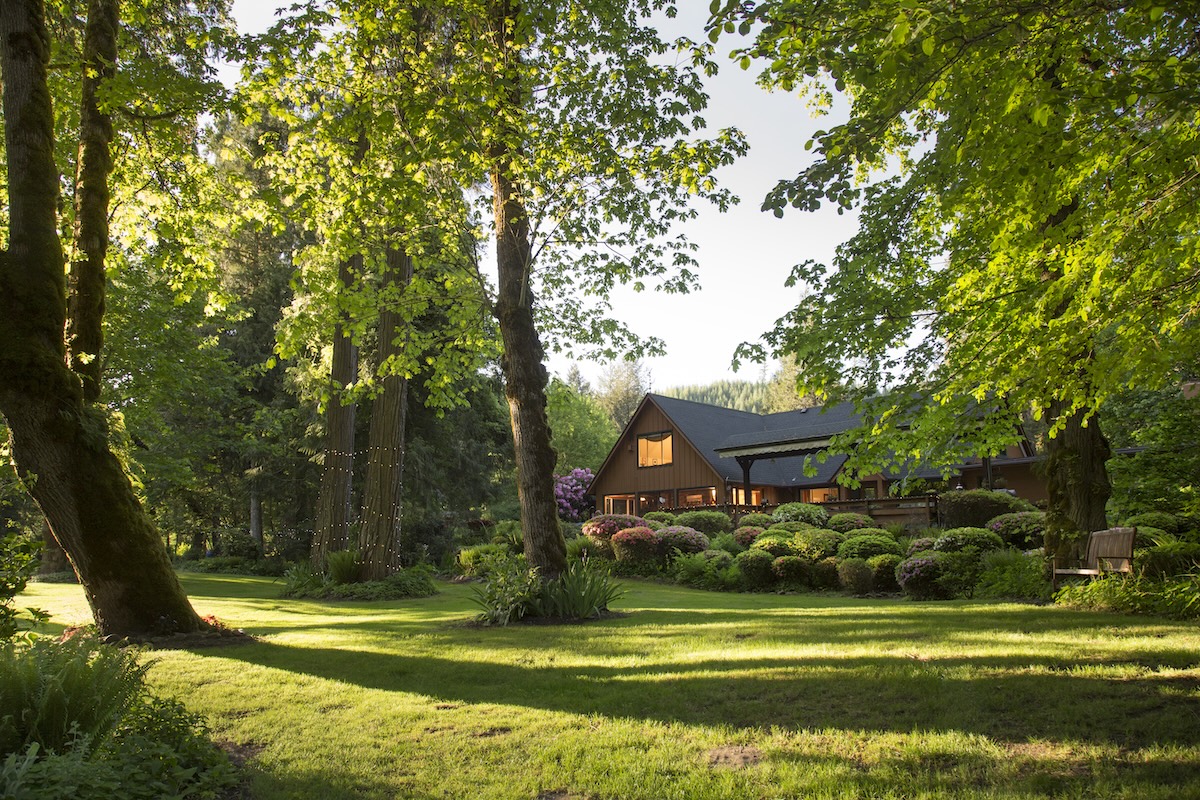

We may earn revenue from the products available on this page and participate in affiliate programs. Learn More ›
Beautiful new landscaping can invigorate a yard. Unfortunately, it’s common for some plants to die or not thrive during the first few months to a year after being installed while they adjust to their new location. They can suffer from transplant shock, or sometimes plants show up damaged or with a disease from the nursery.
With landscaping being a serious financial investment for most homeowners, it’s imperative that landscapers stand behind their work. Learn why it’s so helpful to have a landscape warranty, what’s typically covered by one, and any special requirements and limitations to look out for.
What is a landscape warranty?
Much like a home warranty that protects homeowners from unexpected appliance and system repair costs, a landscape warranty ensures that certain types of vegetation installed are guaranteed for a period of time, provided specific stipulations are met. Essentially, they require the contractor to replace trees, plants, and/or grass that have died or are not thriving.
Considered a standard practice in the landscaping industry, landscape warranties help protect homeowners from the risks involved with a landscaping project and highlight the fiduciary responsibility that landscapers have to their clients. “Warranties are about more than just coverage against failure; they’re about building trust with customers through clear, reasonable expectations established up front,” explains Eric Bramlett of Bramlett Real Estate, an Austin-based firm. Bramlett, who is skilled in both real estate and landscaping, says warranties ultimately ensure a customer’s satisfaction. In fact, landscapers that include warranties often have a competitive edge over those who don’t since they are more willing to stand behind their work.
“Think of a landscape warranty as an insurance policy for your landscape,” says Taylor Green, landscaping expert, outdoor designer, and co-founder of Artificial Grass Solutions, a Los Angeles-based company. “Small upfront costs can prevent hefty future expenses. A good warranty is like a safety net; it ensures beautiful outdoor space remains a paradise, not a money pit.”
How do you know if you have one?

If you previously had landscape work done, but aren’t sure if you have a warranty, you could check your original landscaping contract or agreement to see if a warranty is included, advises Victoria Cummins, gardening expert and senior editor at PlantWhisperer. “Contact the landscaping company that installed your plants, trees, sod, etc., and ask about their warranty policies. Also, look for any tags, labels, or paperwork that came with the plants, indicating a warranty period.” The contractor’s website, also, might offer some insight.
If you’re researching contractors for a new project, check their company website to see if they post their warranty online, as many of them do; if they don’t, ask for a copy of it. Before you sign a contract with a landscaping company, make sure the contract is detailed in terms of specific warranty information to avoid any miscommunications that can lead to replacements and warranty issues. A good warranty will clearly state what each party is responsible for when it comes to guaranteeing the landscape. Be sure both you and the vendor sign and date the contract.
What is typically covered?
Landscaping warranties typically cover replacement of plants, flowers, shrubs, trees, sod, etc. that die due to improper installation or care by the landscaper. However, landscape warranties can vary from one contractor to another, so be sure to read the contract carefully. Also, the details may differ depending on the type of vegetation. Keep in mind that if it is not in writing, it won’t be covered.
“Agree on what will be covered, such as replacement of dead plants, and what is excluded, like damage from pests or extreme weather,” advises Cummins. “Limitations include damage from pests, diseases, neglect, extreme weather, and normal aging. Most warranties exclude plants that are damaged by the homeowner or natural disasters.”
Warranties also come with expectations on the part of the homeowner. “Warranties aren’t just about the landscaper’s responsibility; the homeowner plays a big role, too ,through regular watering, pruning, etc.,” says Bramlett. Discuss the care requirements with the contractor to understand adequate maintenance according to the warranty. Ask for written care instructions, especially with regard to watering and fertilizing. The contractor will most likely conduct periodic inspections to make sure the landscaping is being properly cared for.
How long does the warranty last?

Warranty periods can be all over the place—from 30 days to 2 years—so be sure to read the fine print. Bramlett believes that a 1-year warranty on major plantings like trees and shrubs is fair and standard in the industry. “This allows for the typical settling-in period for those plantings to take hold,” he explains. “Providing at least a full year recognizes that it can sometimes take plants that long to show problems, especially if the growing conditions change after installation (like a drought).” If the contractor’s standard warranty only lasts a few months, try negotiating for a longer time frame of up to 2 years.
While often a basic warranty is included in the price of the landscaping package, some firms allow you to purchase additional warranty coverage, the price of which may be also negotiable.
What limitations should you watch out for?
Warranties typically include numerous exclusions. These include various situations that are beyond the control of the contractor, such as plants being moved in the yard, vandalism or theft, fire, flooding, removing tree stakes too early, pests, insect infestation, unexpected weather events like heat waves and ice storms, and exposure to toxic fumes. Also, look for certain types of vegetation that are exempt from the warranty, such as annuals, perennials, bulbs, and ground covers.
How do they work when you have a problem?
“If a plant dies within the warranty period, contact the landscaper to inspect it,” advises Cummins. “If they determine the plant is dead due to improper installation or care by their crew, they will replace it at no charge to you. You may need to pay a service fee for each warranty claim, similar to a deductible.” Keep in mind that some landscapers will only replace dead vegetation at certain times of the year, so you may need to wait a few weeks or months.
